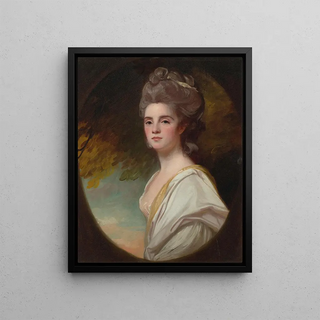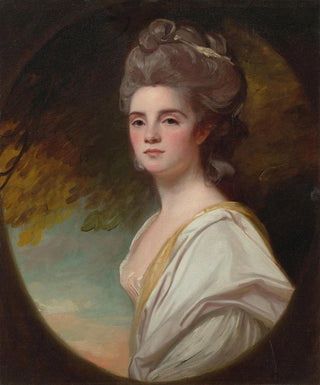Art print | Portrait of Miss Williams - George Romney


View from behind

Frame (optional)
In the fascinating world of 18th-century British painting, George Romney's "Portrait of Mlle Williams" stands out for its elegance and psychological depth. This artwork, which captures the very essence of feminine beauty of its time, immerses us in a world where art and society meet with rare intensity. Through Romney's delicate brushstrokes, the viewer is invited to discover not only the face of Mlle Williams but also a multitude of emotions and hidden stories behind this portrait. The light, shadows, and harmonious composition create an atmosphere that is both intimate and majestic, making this piece a true masterpiece of its era.
Style and uniqueness of the work
George Romney's style is characterized by a refined approach and meticulous attention to detail. In the "Portrait of Mlle Williams," each brushstroke seems carefully thought out to convey a sense of liveliness and realism. The delicacy of the young woman's features, the fluidity of her clothing, and the sparkle in her eyes captivate viewers instantly. Romney manages to blend classicism with romantic sensitivity, creating a perfect balance between tradition and innovation. The colors, chosen with care, evoke a soft and harmonious palette, adding lightness and grace to the composition. This portrait does not merely depict a figure; it tells a story—one of a time when portraiture was a means of asserting social status and individual beauty.
The artist and his influence
George Romney, born in 1734, is one of the major figures of English painting. His career, marked by travels to Italy and a deep admiration for Renaissance masters, shaped his unique style. Influenced by artists such as Reynolds and Gainsborough, Romney developed a personal approach that allowed him to stand out in the artistic landscape of his time. His portraits, often imbued with psychological sensitivity, reveal not only the outer beauty of his subjects but also their inner character. In doing so, he paved the way for a new way of conceptualizing portraiture, emphasizing individuality.

Matte finish

View from behind

Frame (optional)
In the fascinating world of 18th-century British painting, George Romney's "Portrait of Mlle Williams" stands out for its elegance and psychological depth. This artwork, which captures the very essence of feminine beauty of its time, immerses us in a world where art and society meet with rare intensity. Through Romney's delicate brushstrokes, the viewer is invited to discover not only the face of Mlle Williams but also a multitude of emotions and hidden stories behind this portrait. The light, shadows, and harmonious composition create an atmosphere that is both intimate and majestic, making this piece a true masterpiece of its era.
Style and uniqueness of the work
George Romney's style is characterized by a refined approach and meticulous attention to detail. In the "Portrait of Mlle Williams," each brushstroke seems carefully thought out to convey a sense of liveliness and realism. The delicacy of the young woman's features, the fluidity of her clothing, and the sparkle in her eyes captivate viewers instantly. Romney manages to blend classicism with romantic sensitivity, creating a perfect balance between tradition and innovation. The colors, chosen with care, evoke a soft and harmonious palette, adding lightness and grace to the composition. This portrait does not merely depict a figure; it tells a story—one of a time when portraiture was a means of asserting social status and individual beauty.
The artist and his influence
George Romney, born in 1734, is one of the major figures of English painting. His career, marked by travels to Italy and a deep admiration for Renaissance masters, shaped his unique style. Influenced by artists such as Reynolds and Gainsborough, Romney developed a personal approach that allowed him to stand out in the artistic landscape of his time. His portraits, often imbued with psychological sensitivity, reveal not only the outer beauty of his subjects but also their inner character. In doing so, he paved the way for a new way of conceptualizing portraiture, emphasizing individuality.






